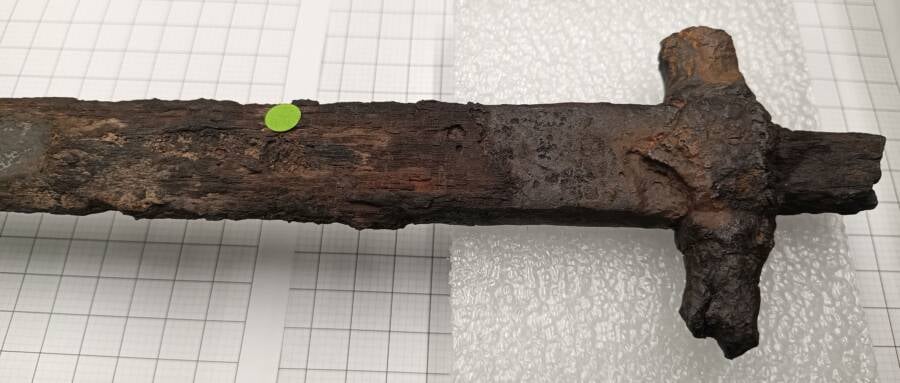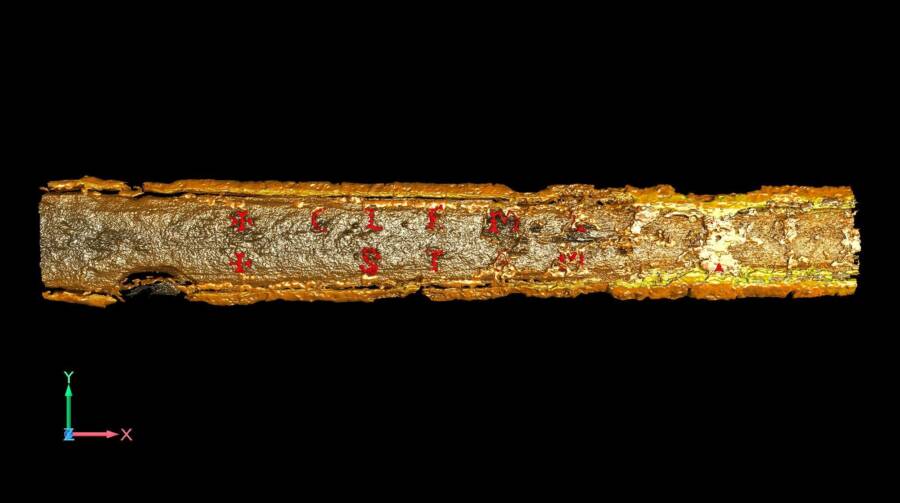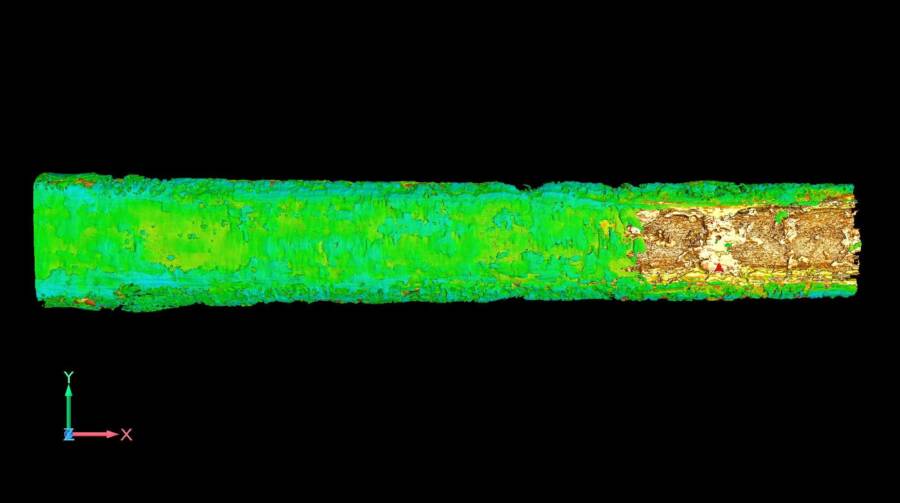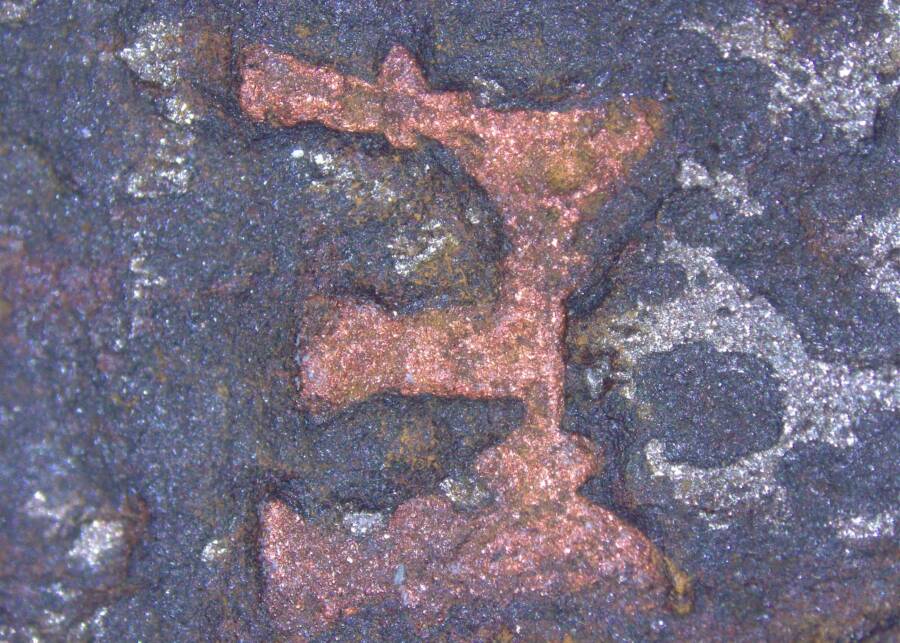Forged circa 1558, this sword was a type of elite weapon known as a degen that was reserved only for the upper class.

INNOVENTThe sword was found amid the rubble of a church in Jena that had been destroyed during World War II.
Thanks to modern CT technology, researchers were able to uncover a hidden inscription on a heavily corroded Renaissance-era sword found in Germany.
The sword was forged circa 1558, and was one of many artifacts unearthed near the church at the center of the University of Jena (formally Friedrich Schiller University Jena). The sword, an elite variety of weapon known as a degen, was covered in layers upon layers of rust.
Researchers were concerned that conventional cleaning methods would damage the artifact, so they turned to computed tomography (CT technology), to scan the sword for anything that might lay beneath the corrosion. What they found was the name of a famous swordsmith who operated in the late 16th century, placing this blade within an historical context far richer than researchers initially imagined.
Revealing The Hidden Inscription On This Renaissance Sword

INNOVENTThe CT scans revealed the engraving “Clemens Stam” on the sword’s blade, a reference to its maker.
Researchers at the University of Jena worked with INNOVENT, an independent research facility located at the university, to look beneath the surface of the sword. According to a statement from INNOVENT, researchers used the facility’s X-ray, micro-, and nano-CT scanner to piece together what sat below the rust.
After the sword was scanned, researchers used a series of algorithms to create different images of the artifact’s various layers. Each image was then coded to show false colors to help visualize what could be seen of the sword in each layer.
For example, in one image they used green to represent parts of the sheath that remained where it was fused with the blade of the sword. Finally, on the opposite side of the sword, the image revealed an inscription that read “Clemes Stam.”
“The sword is made of iron, and the smith’s name is inlaid in copper on both sides of the blade,” Enrico Paust, an archaeologist on the project, told All That’s Interesting. “Since the inscription is almost entirely obscured by the remains of the wooden scabbard, its discovery was only possible non-destructively through CT scans.”
Further historical research revealed that Clemes Stam was not the weapon’s owner, but instead a successful swordsmith located in the town of Solingen toward the end of the 16th century. His craftsmanship was well renowned, having made weapons for European nobility, including the king of Spain.
Seeing as Stam’s work was widely renowned, his name on the artifact reflects the probable high status of the sword’s owner. Researchers believe it may have belonged to a university student from a noble family.
How This Engraved Degen Fits Into The Larger History Of Jena

INNOVENTThe green represents what is left of the sword’s sheath.
The sword was one of four found near the University of Jena’s church, the Collegium Jenense. From 1594 to 1814, professors, students, and their families were buried near the church’s grounds.
Oftentimes, these burials included personal objects or offerings. The recently scanned Renaissance sword was likely one of these items.
During World War II, however, the church was destroyed in an Allied bombing. With artifacts and relics trapped under the remains of the church, it took many years for archaeologists to excavate the area.

INNOVENTA close-up image of one of the letters inlaid on the blade uncovered by the researchers.
Many items, including the sword, were eventually recovered and archived, but then sat untouched for years. Finally, in 2018, the University of Jena began a project to learn more about the early years of the school’s history.
When that project got started, researchers suspected that something was sitting beneath the centuries of corrosion on this Renaissance sword. Four years later, in 2022, they were able to start scanning and analyzing beneath the sword’s layers of rust in order to make their astonishing new discovery.
“CT doesn’t just capture surface details; it reveals the object’s inner story,” said Paust, according to Arkonews. “In this case, it literally uncovered a name that connects Jena to the European tradition of sword-making.”
After reading about the hidden inscription uncovered on this Renaissance sword, learn about the 1,200-year-old Viking sword unearthed in the Norwegian mountains. Then, learn about the 3,000-year-old sword found in Germany that’s so well preserved that it “almost still shines.”





